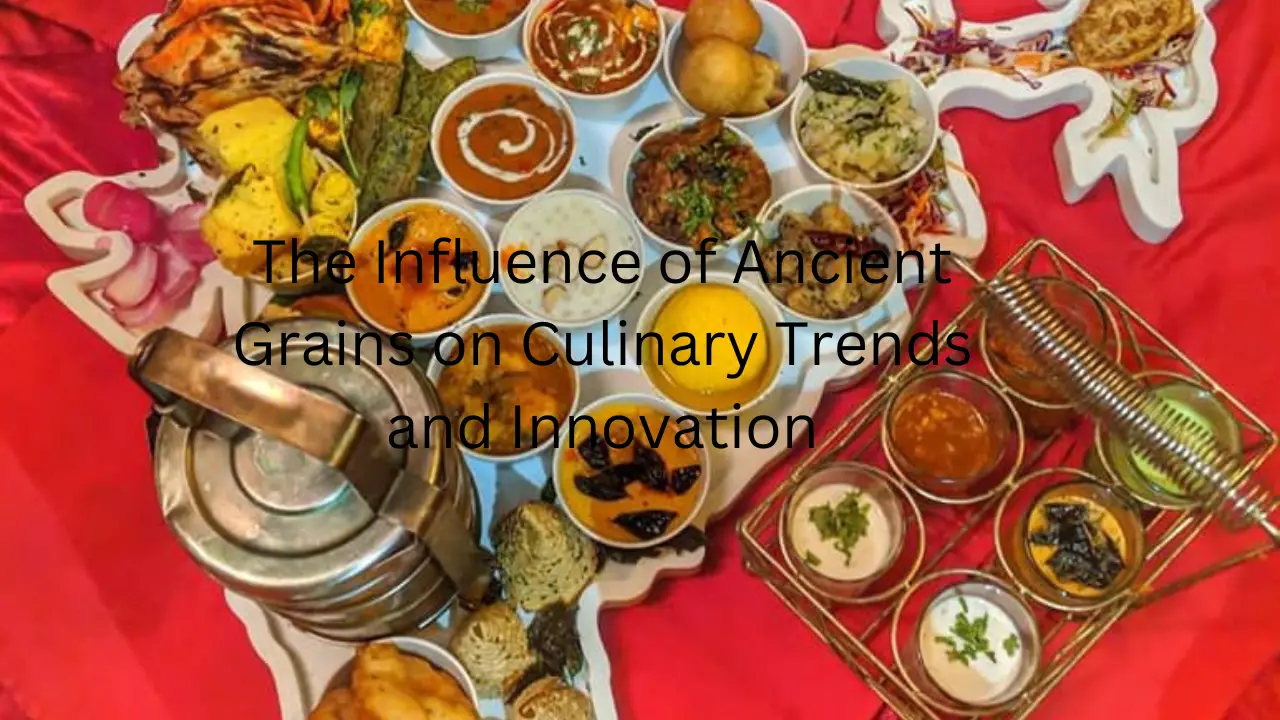
Alpha Grillers Instant Read Meat Thermometer for Cooking Grill and BBQ Griddle - Waterproof w/Backlight & Calibration for Food, Oven, Air Fryer Accessories, Kitchen Essentials, Stocking Stuffer Gifts
20% OffThe Influence of Ancient Grains on Culinary Trends and Innovation
In the dynamic world of gastronomy, culinary trends are ever-evolving, driven by a desire for novel flavors, textures, and nutritional value. Among the influential factors shaping these trends are ancient grains, which have captured the attention of chefs, food enthusiasts, and health-conscious consumers alike. In this article, we’ll delve into the profound influence of ancient grains on culinary trends and innovation, exploring how these grains are redefining the culinary landscape.
Introduction
The culinary world is a canvas that’s continually painted with new ingredients, techniques, and concepts. Ancient grains have emerged as both a testament to tradition and a catalyst for culinary creativity.
Embracing Tradition in Modern Cuisine
Ancient grains connect us to our culinary heritage while offering a modern twist that resonates with contemporary tastes and values.
Ancient Grains: A Creative Canvas
Chefs and home cooks alike are inspired by the unique textures, flavors, and appearances of ancient grains, which lend themselves to diverse culinary interpretations.
Texture and Flavor Exploration
Quinoa: The delicate crunch and nutty taste of quinoa enhance salads, bowls, and even desserts.
Farro: Farro’s chewy texture and earthy flavor make it a favorite for risottos and grain salads.
Amaranth: Amaranth’s delicate pop and slightly peppery taste lend intrigue to both sweet and savory dishes.
Gluten-Free Gastronomy
Ancient grains offer gluten-free alternatives that cater to those with sensitivities while elevating gluten-free cuisine beyond the mundane.
Global Fusion with Ancient Grains
Quinoa Sushi: Quinoa replaces rice in sushi, offering a unique texture and added nutrients.
Amaranth Flatbreads: Amaranth flatbreads merge ancient grains with Indian culinary traditions.
Teff Injera Tacos: Ethiopian teff injera transforms into taco shells, fusing global flavors.
The Rise of Nutrient-Rich Dishes
Ancient grains have revitalized the concept of nutrient-rich dishes, where health and taste harmonize.
Ancient Grains in Baking and Desserts
Spelt Pastries: Spelt flour infuses pastries with a nutty depth, pleasing both health-conscious and indulgent eaters.
Quinoa Brownies: Quinoa adds protein and texture to brownies, redefining dessert indulgence.
Farm-to-Table Revival
The farm-to-table movement finds resonance with ancient grains, connecting consumers with heritage and locally sourced ingredients.
The Role of Ancient Grains in Sustainability
Ancient grains often require less water and fewer inputs than modern crops, aligning with sustainable culinary practices.
Culinary Innovation Beyond the Plate
Ancient grains extend their influence to innovative culinary practices:
- Fermentation: Ancient grains find their way into fermented foods like sourdough and amazake.
- Food Waste Reduction: Byproducts of ancient grain processing, like bran, are repurposed into nutritious ingredients.
Conclusion
Ancient grains have emerged as a dynamic force in culinary trends and innovation, shaping menus, tastes, and approaches to cooking. As these grains bridge the gap between history and modernity, they leave a lasting imprint on the way we eat, think about food, and embrace culinary exploration.
FAQs
- Can ancient grains be incorporated into fine dining cuisine? Absolutely, ancient grains can be elevated into elegant dishes, offering unique textures and flavors.
- Are there any cultural challenges in integrating ancient grains into diverse cuisines? While there might be cultural considerations, ancient grains’ versatility allows them to be adapted across cuisines.
- Do ancient grains pair well with contemporary cooking techniques? Yes, ancient grains can be prepared using modern techniques like sous vide, highlighting their textures and flavors.
- Are ancient grains commonly found in fast food or casual dining? The influence of ancient grains is present across dining formats, from fast-casual salads to food trucks featuring ancient grain-based wraps.
- How can home cooks experiment with ancient grains? Home cooks can explore ancient grains by incorporating them into familiar recipes or using them as inspiration for new dishes.











